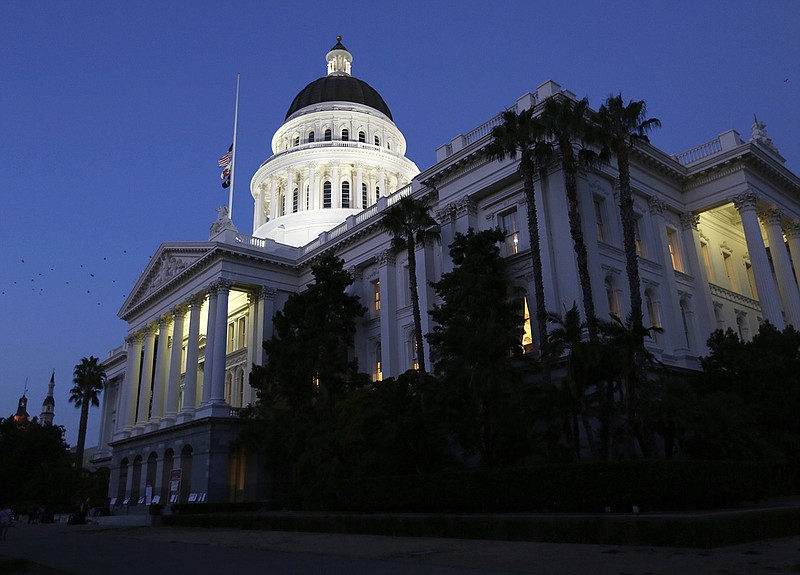Here in flyover country we've been used to hearing for years what the latest cool trend is in California and the complaints that it'll take forever to get here.
Increasingly, what's trending in the Golden State is not what we want.
Lee Ohanian, an economist at the California-based Hoover Institution, recently described the change in economic climate in the state so envied in the 20th century for its beauty and its weather but also for its business approach.
Policies, he said, have shifted from growth-supporting policies to ones much more focused on various social and political considerations.
Two thousand miles away, the nation's most populous state doesn't seem like much of a concern to Tennessee. But California has become a one-party state largely run by Democrats, and their social and political policies are the ones they seek to export across the rest of the country.
Ohanian ticked off taxes, public investment, business regulations, housing cost, homelessness, education and energy as areas where the state is failing.
The state, he said, has the highest tax rate for top earners in the country - 13.3 percent. Including others taxes, the state's most productive workers have an overall marginal tax rate approaching 50 percent, he said. And less than 150,000 of its 35-40 million people pay half its income tax.
The tax rate, according to Ohanian, is similar to that found in many Western European countries, and, as it is in countries such as France, Belgium and Italy, is depressing the economy.
In the 1960s, as much as 20 percent of California's budget was put into capital projects, such as new schools, transportation, infrastructure and water projects, he said. Today, public investment in the state for capital projects is about 2 percent, which doesn't even allow for keeping up with the depreciation of existing infrastructure, he said.
A Forbes article noted how one of those infrastructure investments, the State Water Project, was designed for a population of 25 million people, has been little changed and currently serves a state with 35-40 million people within its borders. Its highways, a recent headline said, "are some of the poorest in the nation and rapidly getting worse."
A year ago, the Bay Area Council Economic Institute pegged the cost of California's unfunded infrastructure needs at up to $737 billion and possibly as much as $765 billion.
In the same era as the original investments were made, housing in the state was about 35 percent higher than in the rest of the country, Ohanian said. But land restrictions since then have driven such prices to 200 percent higher than the national average. To increase affordability, he said, the state needs to ease some of the restrictions to make it easier and less expensive to build.
The state's once top public schools now rank near the bottom among the states. Two reasons for that, he said, are teacher tenure rules that keep the worst teachers employed and a lack of merit-based pay.
On energy, Ohanian said, while the state prides itself on reducing carbon emissions, its efforts make very little difference in the whole scheme of things. But the price Californians are paying for that reduction, perhaps $30,000 per household, only make affordable housing out of the reach of more residents, he said.
Ironically, he said, the increased costs of housing and energy drive residents farther from the city, increasing their use of cars and other transportation, and the attendant pollutants.
What Ohanian touches on very little is where California's money is spent. Despite its now less-than-stellar schools, the state spends one-third of its money on them. Its 2018 budget also allotted $105.6 billion for health care, mostly through the state's Medi-Cal program for low-income residents, of which more than one in three Californians are part. Those residents are also funded for dental and vision services.
A now 3-year-old program also provides cash payments to those who earn too little to pay state income taxes, and the threshold to get on that list has widened significantly.
Indeed, California's spending on the financially needy - $103 billion, according to a November 2017 report - is more than that spent by the next two states on the list combined.
Huge outlays also go to the pensions of public-sector employees. Current projections, according to the Los Angeles Times, show that, minus big changes, those funds soon will come up billions of dollars short of future obligations.
Further, California's debt has been variously estimated to be between $1.3 trillion to $2.3 trillion.
Its situation, according to demographer Joel Kotkin, quoted in Forbes, is a "state run for the very rich, the very poor and the public employees," and, according to a study by U.S. News, "ranks dead last among U.S. states in quality of life."
California, in other words, has lost its way. It sought to be a government-run panacea and is on its way to being a U.S. Venezuela. It's one very good reason voters should think twice about putting candidates who espouse such government-as-nanny policies in place.
